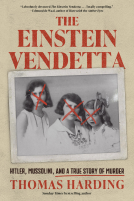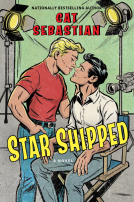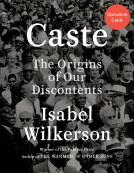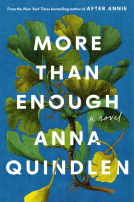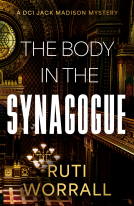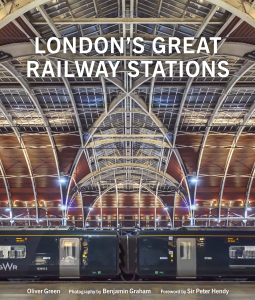
London's Great Railway Stations
by Oliver Green
This title was previously available on NetGalley and is now archived.
Send NetGalley books directly to your Kindle or Kindle app
1
To read on a Kindle or Kindle app, please add kindle@netgalley.com as an approved email address to receive files in your Amazon account. Click here for step-by-step instructions.
2
Also find your Kindle email address within your Amazon account, and enter it here.
Pub Date Nov 23 2021 | Archive Date Jan 11 2022
Quarto Publishing Group – White Lion | Frances Lincoln
Talking about this book? Use #LondonsGreatRailwayStations #NetGalley. More hashtag tips!
Description
London has more mainline railway stations than any other city in the world and many of them are amongst its grandest architectural monuments. Its earliest terminals opened in the late 1830s when lines between the capital and the regions were built in the first railway boom. The original station at London Bridge, the capital’s first passenger terminus, was opened in December 1836, six months before Queen Victoria came to the throne. The last main line to London, the Great Central Railway to Marylebone, was opened in March 1899, two years before Victoria died.
Ever since they originally opened, these stations have been at heart of London life and activity and have dominated the architectural landscape. Many are now in the midst of major reconstructions and are the centrepieces for the transformation of whole swathes of London, from Paddington to King's Cross.
This comprehensive story combines a historical overview, archive illustrations and specially commissioned photography, covering the origins of the earliest stations up to the latest reconstructions and renovations.
Written by the expert author Oliver Green, this is an essential gift for anyone interested in the history of London and its transport.
Available Editions
| EDITION | Other Format |
| ISBN | 9780711266612 |
| PRICE | $45.00 (USD) |
| PAGES | 272 |
Average rating from 27 members
Featured Reviews
 Librarian 431790
Librarian 431790
This book made me travel to London and I was brought back to the times I started a trip from those stations.
I learned about them and their history. Great illustrations.
Highly recommended.
Many thanks to the publisher and Netgalley for this ARC, all opinions are mine
 Educator 901032
Educator 901032
Architecture and train aficionados rejoice! This tome is filled with the history of railways in Greater London as well as images, maps, and short biographies of individuals memorialized at the various terminus stations. Images highlight the unique architectural designs of individual stations as well as some of the surrounding sights juxtaposed with artworks or lithographs of the station in earlier days. Table of contents, index, and further readings provided for ease of navigating the text as well as diving deeper into topics. Would make a beautiful coffee table book after personal use.
Of course, England had a big hand in the Industrial Revolution and the arrival of railroads. The British sure knew how to build stations that, all these years later, still impress. They can add pleasure and excitement to a journey.
A number of sites are featured in this title. I immediately tested the book by looking for St. Pancras and Kings Cross because I have spent time in them. Sure enough, they are here along with many others including Paddington, London Bridge, Charing Cross and a number of others.
This title is packed with photos, maps and texts. If its subject matter is of interest, this is highly recommended.
Many thanks to NetGalley and the publisher. All opinions are m
Wonderful photography book of London's great railway stations. London has more mainline railway stations that any city in the world. Most major capitals have one great station but London spread out it's stations through different neighborhoods in the city. Most of the great stations were built during the reign of Queen Victoria and you can see that reflected in the architecture compared to newer built stations. The book has sections for each of the 13 stations with names like Paddington, King's Cross, London Bridge, Victoria and more. On my last visit to London for Thanksgiving 2019 we stayed at a little AirBnb flat tucked into the neighborhood behind Waterloo Station. Everyday within minutes we could be off to different part of the city by catching the Tube there.
I knew the architectural photos would be great. But I was really drawn in by the historical photos and plans for future. A lot of information is given about each station too. It's history, use during war years or changes are all included. Discussions also include changes for future and anticipation for changes in ridership because of the impact of covid on commuting. I was more fascinated than I was expecting. And now it makes me want to return to the beautiful city even more. Quarto Publishing has put out several books highlighting London and I'm so glad I've gotten to read so many of them. This is for lovers of architecture, trains, history and London. Thank you to NetGalley and Quarto Publishing -White Lion for a temporary eARC in exchange for an honest review.
The real star of this book’s show, for me, is the photography. It’s utterly glorious! So many of the images provide birds-eye views one couldn’t get as an everyday pedestrian!
Whether or not the reader has spent any time in London before picking this up, they’ll inevitably find something of interest in it. I’ve been blessed to visit London several times, and used the Tube fairly extensively, so many a station name included is familiar to me. Paddington is, of course, particularly loved–not only because I stayed closest to there on my last visit, but because of Paddington Bear! (And he suitably gets a mention in this book, as well–as he should.)
Green does a fantastic job at setting each station in both its historical and present-day contexts; the text does read a tad bit dry for me at times, mostly because I’m not 100% a railway aficionado–I’m 125% a London aficionado. 😀 I particularly appreciated Green’s inclusion of literary and film references; one could not mention King’s Cross, for example, without mentioning Harry Potter! And, I learned something new in the section on St Pancras–Midland Railway’s original route ran across the St Pancras churchyard, and Thomas Hardy was a trainee assisting in exhuming bodies to help pave (literally) the way for the station. Some of his writings soon after reflected that experience. (Can’t say I envy him!)
I definitely recommend the read; come for the pictures, and stay for the text.
4/5 stars.
I received an eARC of the book from the publisher via NetGalley. All opinions are my own.
 John L, Reviewer
John L, Reviewer
This very welcome book offers dissertations on the major London train termini, with the history of their construction and every major development since, alongside period images and new photographs that get to show off all the architectural talking points with lockdown levels of commuters in the way. Here, then, is the entrepreneur who dared to dig up Lords, create a cut 'n' cover train line underneath it, and get the ground pitch perfect for the next season's cricket without ever missing a day's play. Here is the underground overground station where you can do all but sit and wait for your train. Here is the station where millions pass through an area calculated by using the beer barrel as a measuring stick.
Not all of the imagery is to the same uniform standard (ooh, look, a lift), but a lot of the shots are perfectly fine for students of architecture, and/or go some to explain what we're looking at when passing through. In fact the passing through may just become a pause and reflection, and I don't say that because of all the war memorials I knew nothing about here – this is just about good enough to make these stations a destination in and of themselves. Not Victoria, though – Victoria's a mess. Eye-opening, and very amenable with it, this gets a strong four stars – if not more from the serious hobbyist historian.
This is both visually stunning and so very interesting! A tour of London's Victorian train stations, both current and defunct, it's arranged loosely in geographical order. Each article includes not only information about the history and construction of the station, but interesting anecdotes from its time in service, from wartime use to the site of the first railway murder!
Each station is documented with a generous number of gorgeous photographs, both contemporary and from archives. Architectural details are lovingly showcased in large-scale and detail shots.
This would be of great interest to history buffs, architecture enthusiasts, armchair travelers, amateur historians, and anyone interested in the growth of cities and transit. There are so many fascinating stories here, and a fabulous visual tour!
Many thanks to the publisher and NetGalley for the opportunity to read and review!
Even if you didn’t read a single word in this book, it’s so worth the purchase. The pictures are so beautiful and artfully taken. The book has so much information that I had no idea and was very interesting.
 Anna L, Librarian
Anna L, Librarian
If I did not have to limit my review of this book to a few, short, paragraphs, I could write a review perhaps, four-hundred pages or more on London’s Great Railway Stations. Upon first laying eyes on the book (mine was an ebook for review), one wants to just look at all the amazingly beautiful photographs. As my eyes ran over minute details of buildings, wrought-iron roofs, and decorative metalwork in many of the historic railway stations, I couldn’t help but stop and read every caption describing the photographs. Then, I had to take some time to read the history behind each station in each section.
As in all things England, descriptions of characters such as Shakespeare, Chaucer, Dickens, cannot be done in a simplistic and speedy manner. It must have depth of meaning, accurate, detailed. How could we not expect that of this book on London’s Great Railway Stations? An extraordinary amount of time had to have gone into the preparation then assembling of this book. Glancing through the photographs will not do the book justice. As a matter of fact, the photographs create a mesmerizing sensation and you will have no choice but to read every word to the very end.
 Abby S, Reviewer
Abby S, Reviewer
When we travel to London my husband and Inlove traveling on the trains part of our delight is visiting train stations.The photography in this book is breathtaking eye opening.I really enjoyed reading about the history of these stations.I can’t rave enough about the photography wiould make a gorgeous gift.#netgalley #quartobooks
What a gorgeous book to have on your coffee table! There are so many beautiful pictures, both current and historic drawings. It was interesting to see the changes at London Bridge Station since I lived in the area back in 2008. What I especially love about this book is the ability to see these stations from a vantage point that isn't the sidewalk in front or a taxi window. It's so easy to miss the gorgeous architecture and size of these buildings when you're in the middle of a commute or trying to catch a train on time. I have to imagine that the lockdown environment made it possible for these photos to be taken. Gone are the crowds and traffic and all that's left is the glory of the stations themselves. Would make such a wonderful gift for a lover of trains, architecture, or London!
Thanks to NetGalley and the publisher for the opportunity to read this book.
Everyone who knows or follows me knows that I love London. I have traveled the city extensively and a lot of my journeys have involved jaunts through London’s train stations. I’ve taken the Chunnel to and from Paris. I’ve taken commuter trains to Windsor Castle and Hampton Court. I’ve taken the national rail to the North. I’ve taken more underground rides than I can count. This book dives into the rich history of London’s train stations. This book is organized by station and takes a deep look at the history and lasting legacy of each station. The photography is absolutely amazing and beautifully captures the small details that make each station unique. I especially loved the historical photographs showing either how much has changed or more impressively how much has stayed the same. The book filled me with a deep longing to return to London so I can see the stations again with new eyes.
Thank you to NetGalley and Quarto Publishing for the ARC
 Stacey P, Reviewer
Stacey P, Reviewer
I lived in England for many years and loved the Railway Stations in so many of the towns. I especially loved them in London. They history screams at you and I loved reading about it all especially my favorite stations. If you love history give this one a try!
 Reviewer 647588
Reviewer 647588
Equal parts history and eye candy make for a very enjoyable book. London was a natural magnet for all the early railroad companies and each one wanted it's own station. Oliver Green tells the story of each station accompanied by both historical illustrations and Benjamin Graham's wonderful contemporary photographs. Since all the stations are over one hundred years old each has quite a history of changes for better or worse. The railroad companies went through mergers, nationalization, privatization as well as the need to accommodate changes in passenger trends. This meant additions, remodels, in some cases neglect and in others preservation. My only complaint is that there is only one map and it's a very cluttered older map. I would love a more simplified map. Very well done.
 Andrew S, Reviewer
Andrew S, Reviewer
I’m not a train buff but I have travelled a good deal in the UK using this mode of transport. My dad worked for British Rail as a coach builder (a carpenter who worked on the carriages) and he was allowed a small number of free tickets each year for use by himself and his family. Usually this made possible an annual excursion to London, and this meant that journey's end was Paddington Station, the station serving travellers from the South West. On exiting the train the sight of Brunel's triple-span iron and glass roof was (and still is) just awe inspiring. Latterly, my journeys to this station have been largely work related but the sense of arriving somewhere ‘significant’, of alighting at a station fitting the nation’s capital hasn’t diminished.
Until I read this book I didn’t know that London has more main line stations (13) than any other city in the world. All of these were built in the Victorian period: the first six months before her reign commenced and the last two years before she died. Seven of them opened between 1860 – 75. The grandeur of this period is fully reflected in some of the architecture, most notably the flamboyant neo-Gothic exterior of St Pancras (which is, in fact, the former Midland Grand Hotel). I drove past this station once and recall being somewhat gobsmacked at the sight of it, but had no idea it what the building actually represented.
The history provided here is comprehensive and the range of photographs equally so. I’ve never visited the majority of these stations but there are certainly a few I’ve now made plans to seek out. This is a wonderful book for railway enthusiasts or in fact anyone interested in the history of the city’s rail infrastructure.
Readers who liked this book also liked:
Rachel Joyce
Historical Fiction, Literary Fiction, Women's Fiction
Kim Hana; Hwang Sunwoo
Biographies & Memoirs, Nonfiction (Adult), Parenting, Families, Relationships
